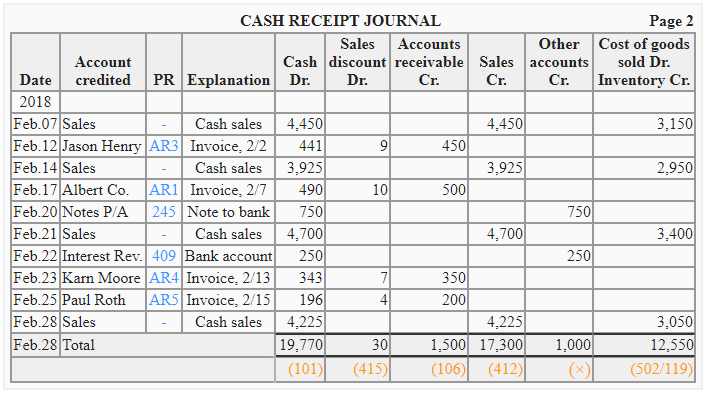
A gross receipts tax is a tax applied to a company’s gross sales, without deductions for a firm’s business expenses, like costs of goods sold and compensation. Sirius XM Radio, Inc., 604 S.W.3d 125 (Tex. In short, receipts can relate to more transactions than just those associated with revenues. Gross receipts taxes are a prime example of tax pyramiding in action. Another possibility is that the firm sells shares in the business to an investor in exchange for cash. Say you want to find your gross receipts for the year to take out a small business loan. For example, it could receive cash from a lender when it enters into a lending arrangement. There are a number of cases in which a company can experience receipts that are not related to revenues. Ten days later, the restaurant pays the bill in full, resulting in a $300 receipt, which is recorded as an increase in cash and a reduction of the account receivable. Unrelated business taxable income is still subject to the tax (for example, a. As soon as the mushrooms are delivered, the food provider can record revenues of $300 and an account receivable in the same amount. Also, the exemption only applies to gross receipts relating to the exempt status. For its 2018 tax year, the prior three - year average gross receipts are 25 million. Example of Revenues and ReceiptsĪ food provider sells a crate of mushrooms to a restaurant for $300, under 10-day payment terms. Example: A business has gross receipts of 20 million in 2015, 25 million in 2016, and 30 million in 2017.

Thus, an additional difference is really just a matter of timing, where the revenue is recorded first, and the receipt is recorded later, when the customer pays.


Revenues are earned when goods are sold or services are provided at this point, an invoice is issued to the customer for payment, after which the seller receives payment from the customer (the “receipt”).
#Example of gross receipts software
A company incurs 300,000 in eligible costs in an attempt to develop its flagship software product. The key difference between revenues and receipts is that revenues are reported as sales on the income statement, while receipts increase the cash total on the balance sheet. Gross receipts for any taxable year of less than 12 months must be annualized by multiplying the gross receipts for the short period by 12 and dividing the result by the number of months in the short period.


 0 kommentar(er)
0 kommentar(er)
